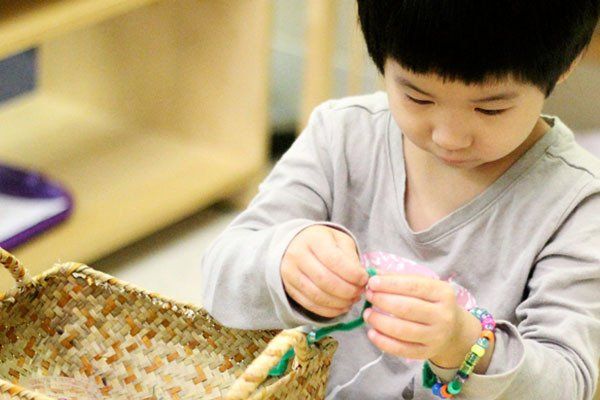Montessori vs. Traditional Education
Montessori Education
- Views the child holistically, valuing cognitive, psychological, social, and spiritual development.
- Child is an active participant in learning; allowed to move about and respectfully explore the classroom environment; teacher is an instructional facilitator and guide.
- A carefully prepared learning environment and method encourages development of internal self-discipline and intrinsic motivation.
- Instruction, both individual and group, adapts to students’ learning styles and development levels.
- Three-year classroom age span allows teacher, students, and parents to develop supportive, collaborative and trusting relationships.
- Grace, courtesy, and conflict resolution are integral part of daily Montessori peace curriculum.
- Values concentration and depth of experience; supplies uninterrupted time for focused work cycle to develop.
- Child’s learning pace is internally determined.
- Child learns to self identify own errors through feedback from the materials; errors are viewed as part of learning process.
- Learning is reinforced internally through the child’s own repetition of an activity and internal feelings of success.
- Care of self and environment is emphasized as integral to the learning experience.
- Child can work where he/she is comfortable. Children often have the choice between working alone or with a highly collaborative group of students.
- Multi-disciplinary, interwoven curriculum.
- Progress is reported through multiple formats: conferences, narrative reports, checklists and portfolio of student’s work.
- Children are encouraged to teach, collaborate, and help each other.
- Child is provided opportunities to choose own work from interest and abilities, concepts taught within context of interest..
- Goal is to foster a love of learning.
Conventional Education
- Views the child in terms of competence, skill level, and achievement with an emphasis on core curricula standards and social development.
- Child is a more passive participant in learning; teacher has a more dominant, central role in classroom activity.
- Teacher acts as a primary enforcer of external discipline promoting extrinsic motivation.
- Instruction, both individual and group, adapts to core curricula benchmarks.
- Same-age and/or skill level grouping; one-year cycles can limit development of strong teacher, student, and parent collaboration.
- Conflict resolution is typically taught separately from daily classroom activity.
- Values completion of assignments; time is tightly scheduled.
- Instructional pace usually set by core-curricula standard expectations, group norm, or teacher.
- Work is usually corrected by the teacher; errors are viewed as mistakes.
- Learning is reinforced externally by test scores and rewards, competition and grades.
- Less emphasis on self-care, spatial awareness, and care of environment.
- Child is usually assigned a specific work space; talking among peers discouraged.
- Curriculum areas usually taught as separate topics.
- Progress is usually reported through conferences, report cards/grades, and test scores.
- Most teaching is done by the teacher and collaboration is an alternative teaching strategy.
- Curricula organized and structured for child based on core curricula standards.
- Goal is to master curricula objectives.



